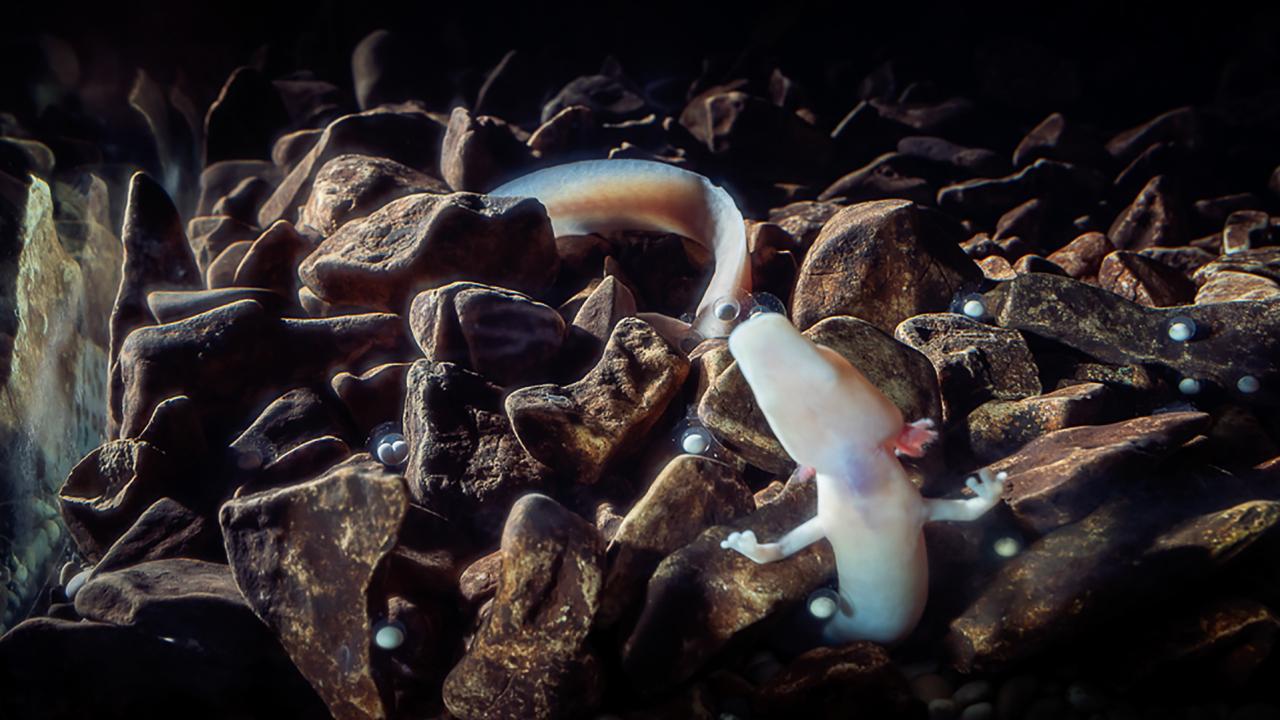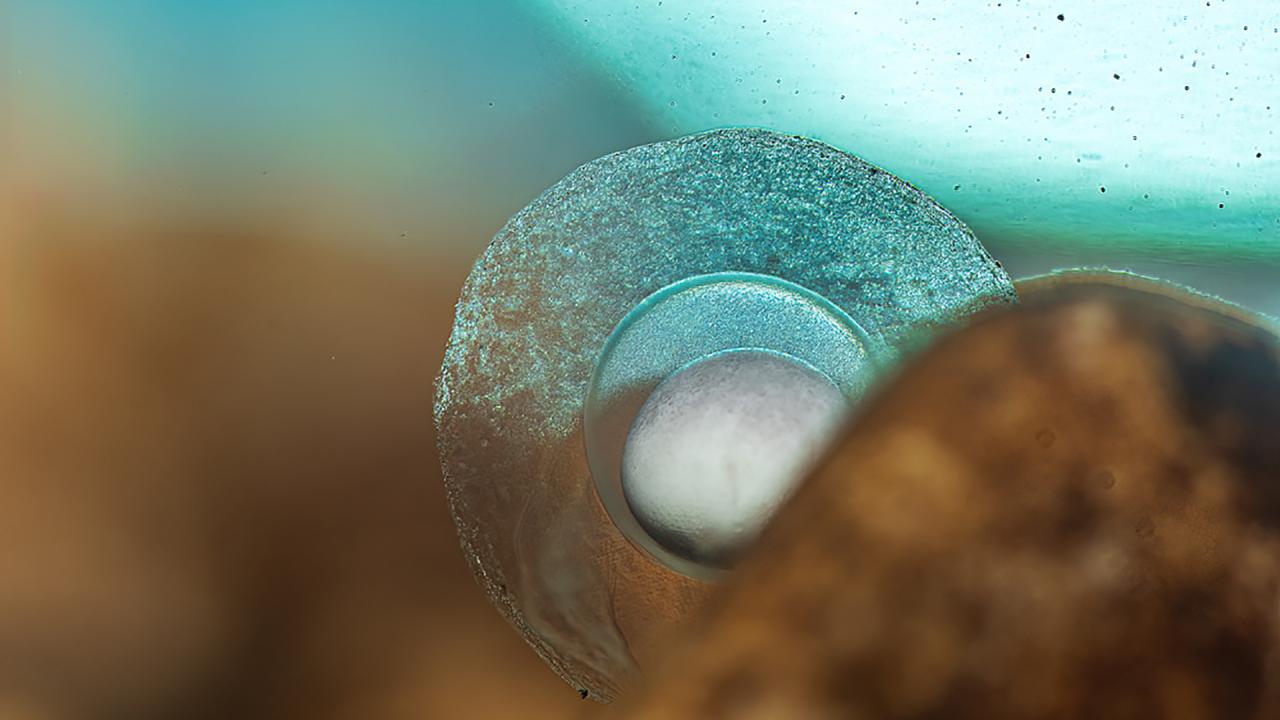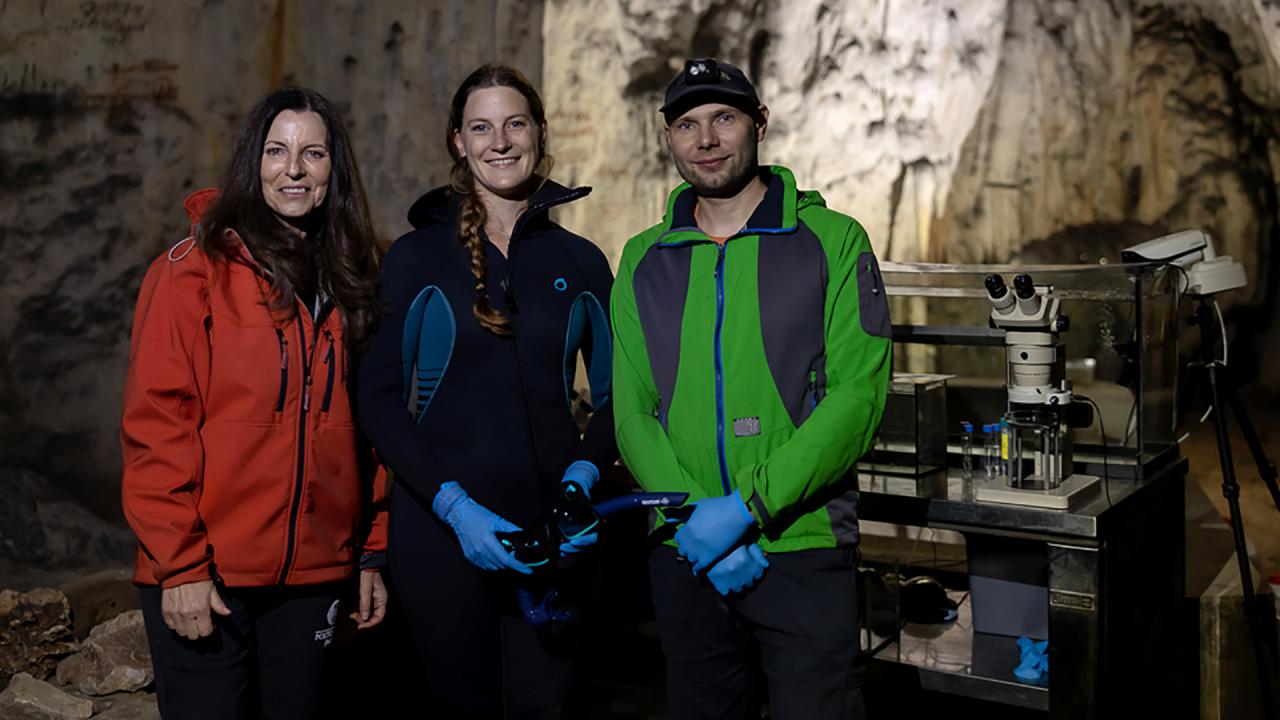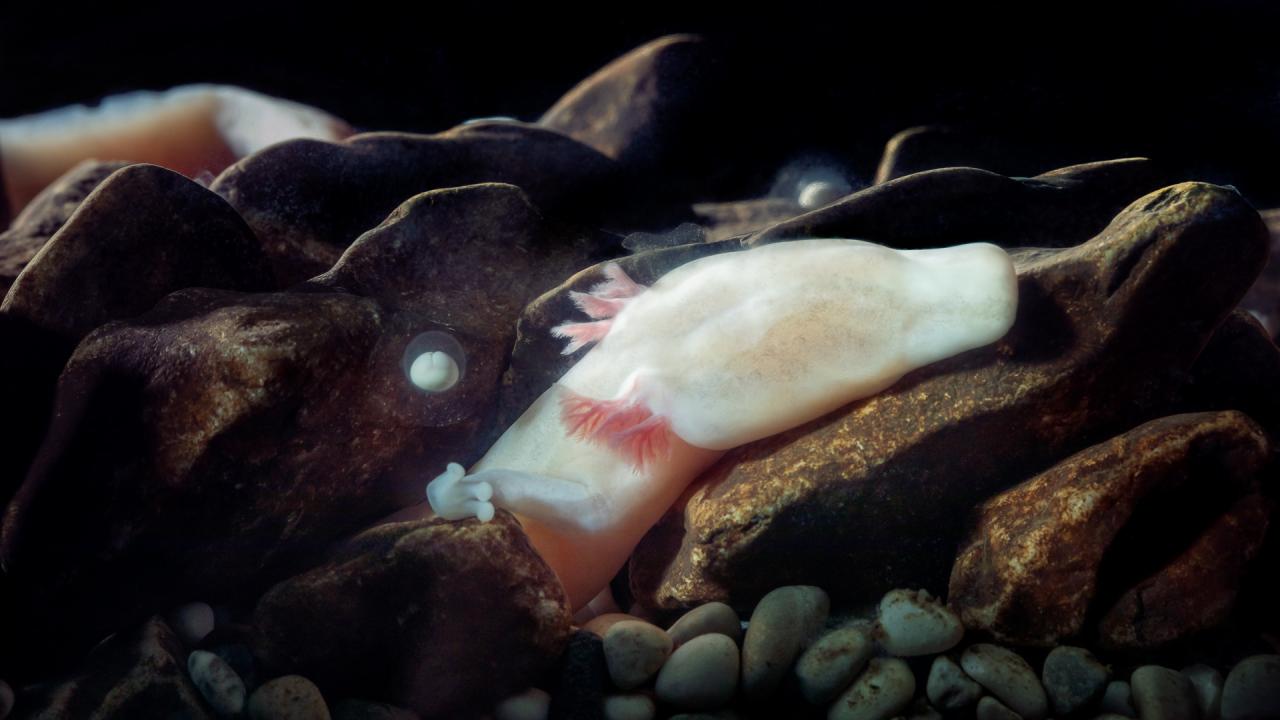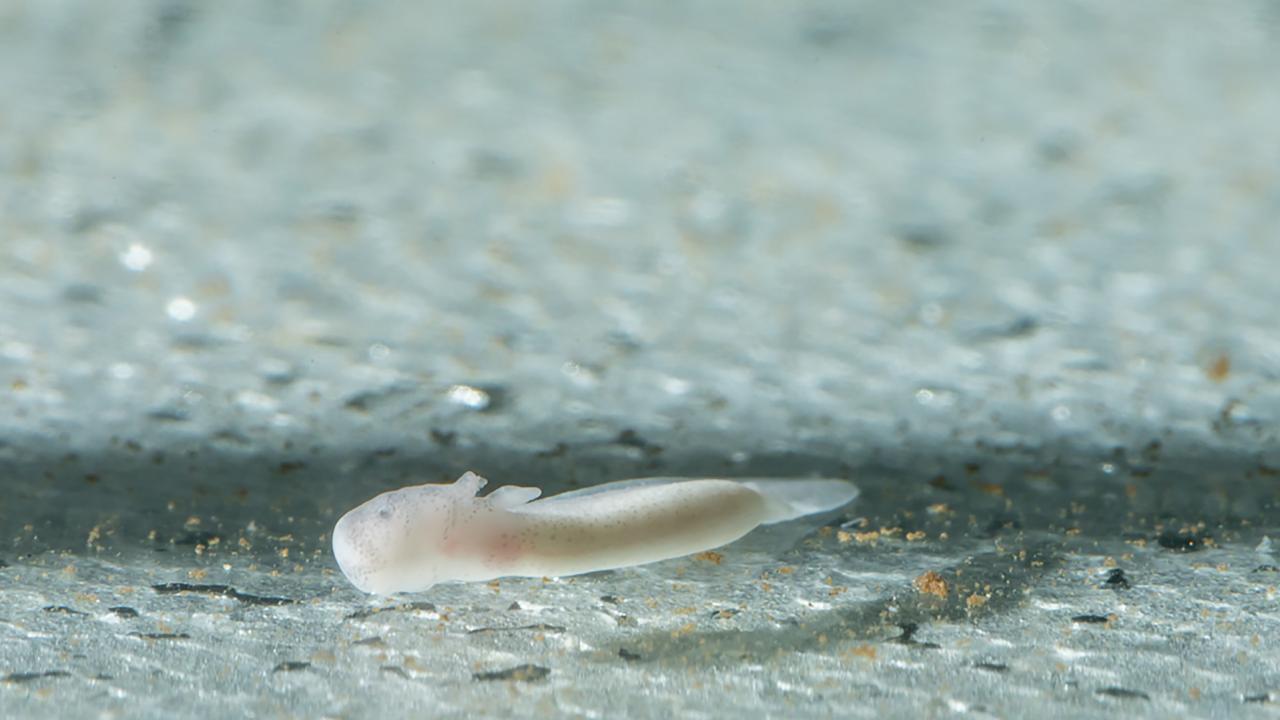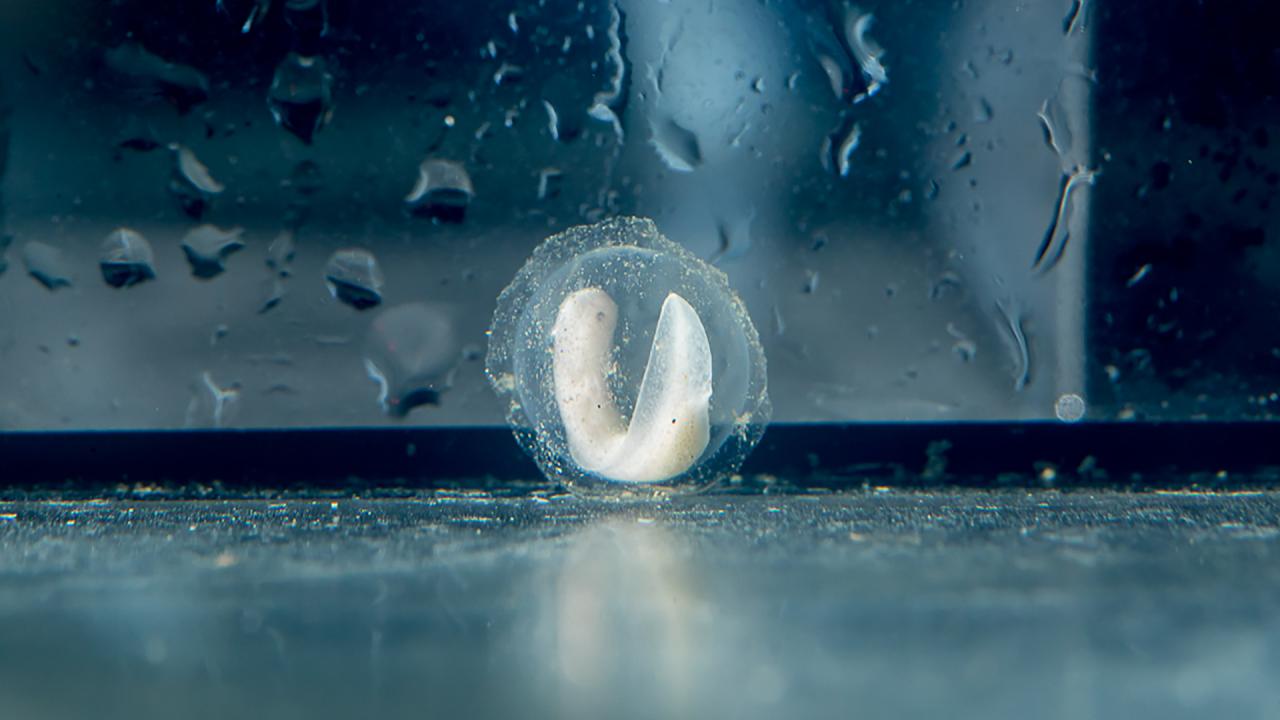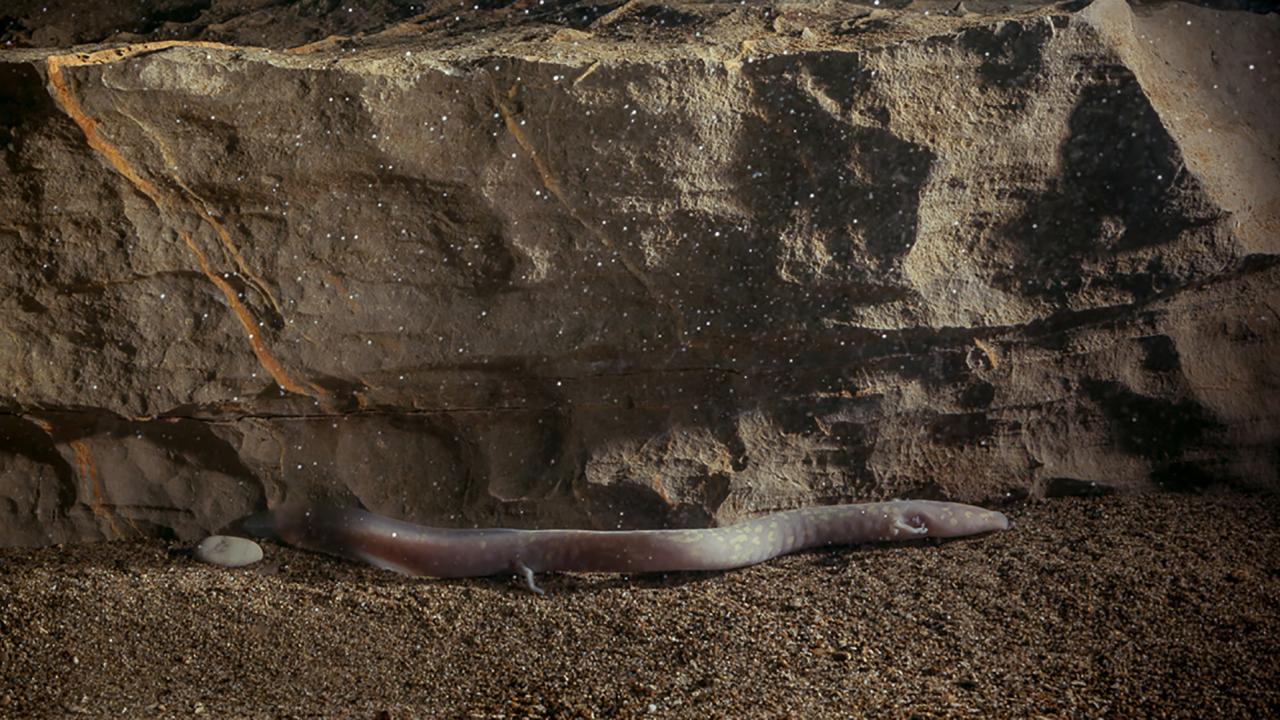A Record-breaking Achievement of Postojna Cave's Baby Dragons!
A New Brood of Baby Olms in 2022
In the largest Slovenian tourist attraction, Postojna Cave – nicknamed "the world's most famous dragon nest" by the global media following a story that attracted a lot of media attention in 2016 – one of the female olms laid new eggs this summer. Their development has been very successful and we are expecting the last two baby olms to hatch in the coming days! We are about to witness an unprecedented reproductive success rate in the world of olms!
The olm – known all over the world as the baby dragon – is the largest cave-dwelling animal and a precious endemic of the Dinaric Karst, which means that its habitat is limited to a very small part of the world. Olms have always stirred people's imagination with their unusual, one-of-a-kind features. They are blind, live in complete darkness and can survive without food for years. Their main home and the place where you can meet them is the awe-inspiring Postojna Cave in Slovenia.
Olms caught the interest of numerous scientists, for instance Charles Darwin himself wrote about them, they were researched by the Italian naturalist Giovanni Antonio Scopoli and, as a rather unexplored animal species with the Latin name Proteus anguinus, they keep intriguing the world's scientific community even today.
And Postojna Cave's team of biologists, headed by Katja Dolenc Batagelj, has now achieved something that has never happened before. After no one had ever seen olms reproduces in the wild and a one-of-a-kind event was witnessed in Postojna Cave six years ago – the first hatching of baby olms in the 200-year history of Postojna Cave in front of our very eyes – we are about to witness a record-breaking reproductive success rate.
THE WORLD'S MOST SUCCESSFUL CAVE LABORATORY
Our biologist Katarina Kanduč noticed that some eggs were visible in the body of one of our female olms in the Vivarium back in early May. We watched and waited patiently until one day, right in the middle of a visit from a group of schoolchildren, the silence next to the aquarium was interrupted by an innocent, yet big question asked by a 13-year-old visitor, "Are there new eggs?" And that's how the story of the 2022 Olm Brood started.
Of the 43 eggs laid in early June, we're now eagerly waiting for the last two of the 32 baby olms to hatch. Statistically, this means a record-breaking 74% reproductive success rate. Never in their wildest dreams did our cave-laboratory team imagine this would happen.
In fact, according to the scientists’ statistical reasoning, out of 500 eggs laid in the wild, only two juvenile olms reach adulthood. In 2016, when we witnessed the hatching of 22 baby olms in Postojna Cave for the first time, we had a 34% success rate, which was a fantastic result. According to the most optimistic predictions, the best we could have hoped for was a single baby olm. Now, six years later, we are expecting a success rate that is the double of what it was back then.
This confirms the reputation of the most successful cave laboratory, where, according to scientists, baby dragons are provided with optimum conditions for growth and development.
HOW IS THIS POSSIBLE?
We have been asked how it is possible that such extraordinary events take place in Europe’s largest tourist cave? "It's quite simple" is the unexpected answer given by Katja Dolenc Batagelj, the head of the cave laboratory, who always emphasises that in such exceptional situations knowledge alone is not enough, such situations also require the heart. "Everything we do, we do with TCL in mind. Tender caring love is what we’re all focused on while working with our baby olms.
However, behind the scenes, there is also a lot of hard work, a great responsibility that we have taken upon ourselves, our own know-how and the wealth of experience we gained six years ago. The team that cares of the baby dragons is extremely dedicated. The eggs, the embryos and the baby olms need round-the-clock care, feeding, cleaning, monitoring, data recording, filming and a number of other things. If necessary, even diving into ice-cold water or suddenly leaving in the middle of a theatrical performance, if the head of the cave laboratory suddenly happens to notice something unusual in the aquarium through real-time video footage, which makes it necessary to rush to the cave and check if everything is okay.
The guardians of Postojna Cave's olms, who were named the finalist of the prestigious Natura 2000 award, which is presented by an expert EU panel of judges, are slowly discovering new olm-related things. When it comes to olms, there are countless unknowns that have yet to be uncovered. Earlier this year, our olm guardians witnessed an extremely rare occurrence: twin olm eggs. Empirical research has confirmed some previous assumptions, i.e. that the speed of embryo development and how quickly the olms hatch are impacted by the ambient temperature. If the cave temperature is higher, development takes place at a faster rate.
In 2016, the very first baby olms hatched after four months – this was in a cave area where the temperature is constant at 8 –10 °C. This year, however, the 2022 brood of baby olms, which live in a cave area with a higher average temperature of approximately 10–12°C, took the team of biologists by surprise, when they started to hatch after only three months, i.e. a whole month earlier.
NEW EVIDENCE, NEW FINDINGS
Our archives contain thousands and thousands of video recordings and rare photographs that will help us or our descendants – with the valuable support of the scientists from the Biotechnical Faculty in Ljubljana, especially Dr Lilijana Bizjak Mali – come to new findings. For instance, we, or better our descendants, will be able to confirm with certainty whether the natural lifespan of olms is really as long as it is assumed, i.e. it is believed that they can live for 100 years or more. They will also help us find out more about the olms' genetic code and life cycle.
At the same time, research into olms and their life is also extremely important in raising public awareness. As a sustainable destination, we aim to achieve the "sustainable development goals" as set out by the Assembly of European Regions (AER). "We are changing the attitude towards the environment and above all we are educating every single person that that they should care about the environment and clean water. We are starting off with children who come here on school trips. This is why we are so happy that the olm eggs were discovered by a primary school pupil," says Katja Dolenc Batagelj.
We were reminded of the importance of taking care of the life below water while looking at embryos in the photos, when we noticed microplastics was present even in the cave rainwater, which seeps into the cave through soil layers that are several metres in depth.
DID YOU KNOW?
Scientists have described the cave laboratory at Postojna Cave as "an important step towards the implementation of optimum living conditions for successful olm breeding in captivity." However, its history goes back more than 90 years.
1914 – During their visit to Postojna Cave, the pioneers of modern-day speleobiology, E. G. Racovitza and R. Jennel, proposed that that, due to the diversity of cave life and favourable conditions, a cave laboratory should be set up.
1931 – Italian speleobiologists set up the first cave biological research station – "STAZIONE BIOSPELEOLOGICA" – in the so-called Passage of New Signatures, i.e. the present-day Vivarium.
2014 – The first biologists were employed at Postojna Cave and the care of cave-dwelling animals and speleological research was taken over by Postojna Cave's own team.


 slovenščina
slovenščina Deutsch
Deutsch italiano
italiano Hrvatski
Hrvatski français
français español
español polski
polski čeština
čeština magyar
magyar Русский
Русский Nederlands
Nederlands Português
Português 한국어 [韓國語]
한국어 [韓國語] 中国的
中国的 日本語
日本語 עברית
עברית